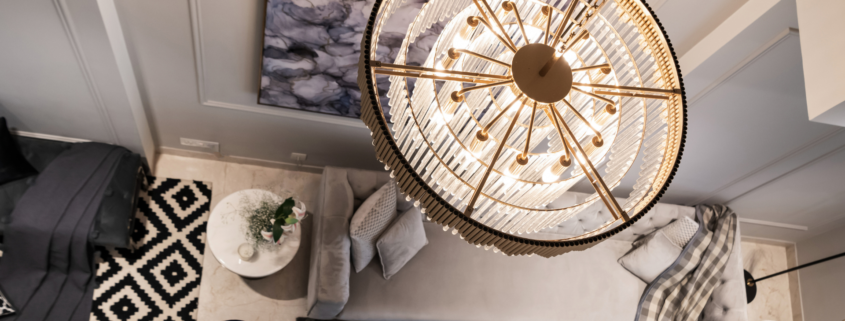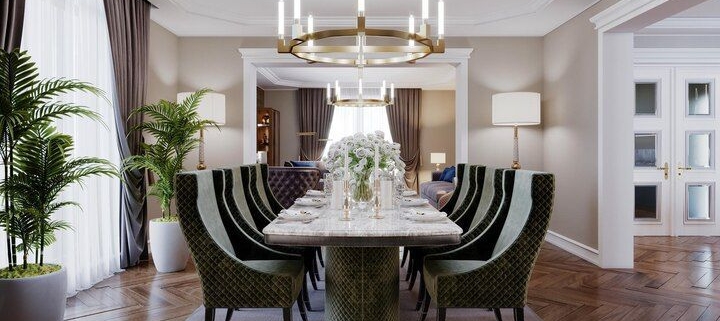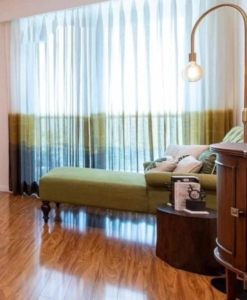Let There Be Light: The Designer’s Guide to Lighting
As designers, we understand the transformative power of light. It sets the mood, defines zones, and showcases the beauty of our design decisions. Mastering architectural lighting is the key to turning a house into a home, a space that not only looks stunning but feels truly livable.
The Secret is in the Layers
Think of architectural lighting as a symphony – a harmonious blend of different elements, each playing a vital role. Here are the key players:
Ambient Lighting: This is the foundation, the warm glow that sets the overall mood. Recessed can lights are a popular choice, but for a touch of luxury, consider cove lighting, which hides the light source and bathes the space in a soft, diffused light. In a modern living room, for instance, sleek track lighting can create a gallery-like feel, highlighting artwork and adding a touch of drama.
Task Lighting: This is all about functionality. Imagine prepping a gourmet meal in a kitchen shrouded in dimness – not ideal! Here, under-cabinet lighting ensures countertops are well-lit, while pendant lights over the sink or island add a decorative touch and provide focused illumination for washing dishes. In a bedroom, bedside sconces with adjustable arms offer the perfect reading light, while a statement floor lamp in a cosy corner creates a perfect spot for curling up with a book.
Accent Lighting: This is where we get to play with drama! Strategic use of spotlights, track lighting, or strategically placed LED strips allows us to highlight architectural details, showcase treasured artwork, or create a focal point in a room. Imagine uplighting a stunning stone wall in a living room to create a warm, inviting atmosphere, or using recessed spotlights to accentuate the intricate details of a hand-woven rug in a dining room.
Room by Room Spotlight
Now, let’s see how these layers translate into different rooms:
Bedroom: Create a sanctuary of serenity with layered lighting. Dimmable recessed lights provide a warm glow, perfect for unwinding. Bedside sconces with warm white bulbs offer task lighting for reading, while cove lighting above the headboard adds a touch of luxury and creates a relaxing ambience.
Living Room: Encourage conversation and relaxation with a warm and inviting ambience. Recessed lighting provides general illumination, while strategically placed floor lamps with warm white bulbs create cosy corners for intimate gatherings. Don’t forget accent lighting! Use track lighting to showcase a statement piece of art or strategically placed spotlights to highlight architectural details like a beautiful brick fireplace.
 Dining Room: Set the stage for memorable meals. A statement chandelier is a classic choice for beautiful ambient lighting. Dimmer switches allow you to adjust the mood, while pendant lights over the table with a slightly cooler colour temperature (around 4000 kelvin) ensure a well-lit dining experience.
Dining Room: Set the stage for memorable meals. A statement chandelier is a classic choice for beautiful ambient lighting. Dimmer switches allow you to adjust the mood, while pendant lights over the table with a slightly cooler colour temperature (around 4000 kelvin) ensure a well-lit dining experience.
Kitchen: Functionality reigns supreme here. Recessed downlights with a cool colour temperature (around 4000 kelvin) provide overall brightness, while under-cabinet task lighting illuminates countertops for food prep. Pendant lights over the sink or island can add a decorative touch and provide additional task lighting.
Bathroom: Balance relaxation and task lighting. Recessed lights with a neutral colour temperature offer overall illumination, while sconces flanking the mirror with a slightly cooler colour temperature provide task lighting for grooming. Consider dimmer switches for a spa-like experience, allowing users to create the perfect ambience for a relaxing bath.
Beyond the Basics: Pro Tips for Lighting Design
* Color Temperature: Remember, warmer light (around 3000 kelvin) creates a cosy feel, while cooler temperatures (around 4000 kelvin) enhance task visibility. Play with colour temperature to create different moods in different areas.
* Dimming Controls: Dimmer switches are your best friend! They allow for ultimate flexibility, letting you transform a space from bright and functional to intimate and inviting.
* LED Technology: Embrace energy-efficient LED fixtures. They offer long lifespans, a variety of color temperatures, and are often dimmable.
Light the Way to Design Success
By understanding the power of architectural lighting and applying these tips strategically, you can elevate your residential projects to new heights. Remember, lighting is an integral part of your design scheme. It’s not just about illumination; it’s about creating an experience, a feeling. So go forth, light up your designs, and create spaces that are not only beautiful but truly livable.



 Touch: A Sense of Comfort
Touch: A Sense of Comfort